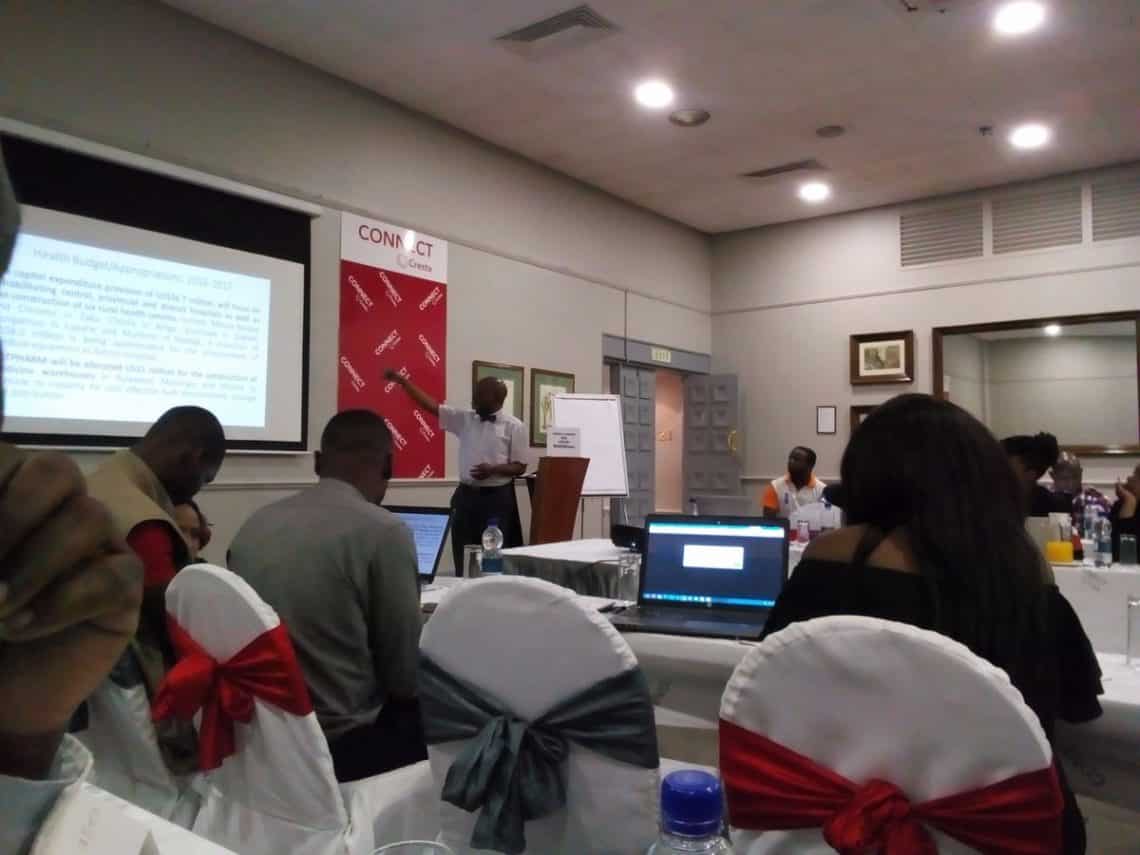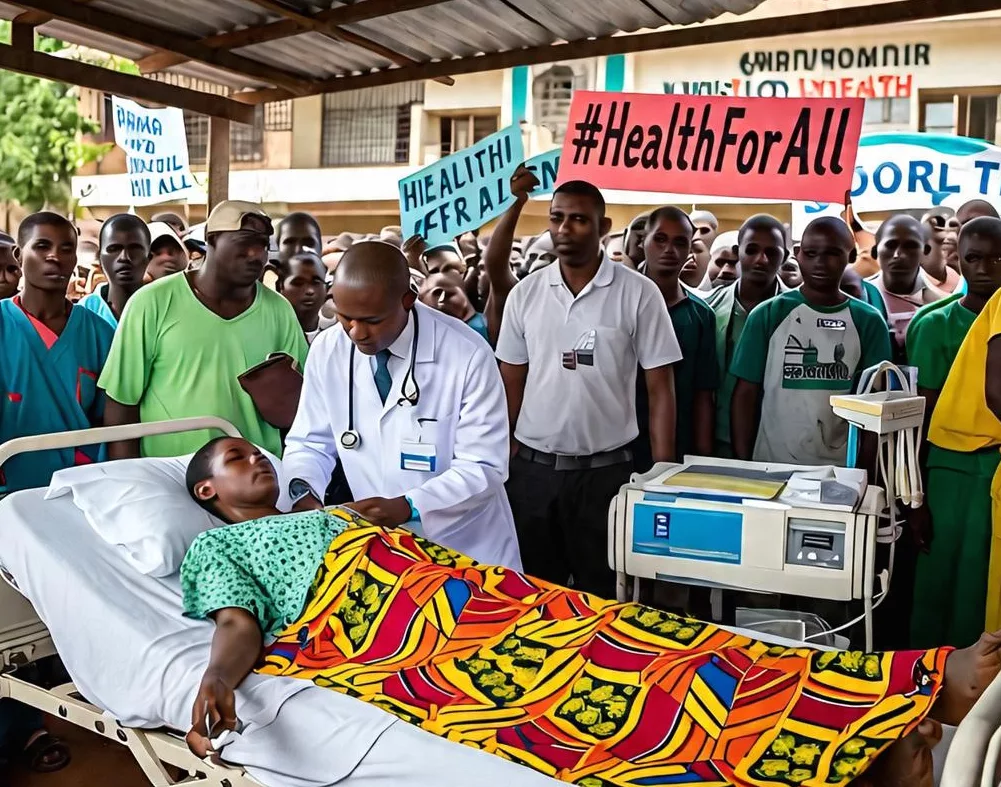By Byron Mutingwende
Renowned economist, Prosper Chitambara has said the 2018 National Budget contains pragmatic measures to cut unproductive and wasteful recurrent expenditures while scaling up social and capital expenditures, a situation that provides a solid foundation for medium term development if implemented.
Chitambara was analysing the health implications of the 2018 National Budget when he made the remarks at a post-budget meeting organised by the Community Working Group on Health (CWGH) and the Parliament of Zimbabwe.
He said the 2018 National Budget came at a time the country had just experienced some political leadership changes which have brought confidence and hope of an economic turnaround to many people.
“On the economic front the country continues to experience a binding liquidity crisis. The liquidity crisis is a manifestation of structural deficiencies and distortions in the economy typified deindustrialisation, rising informality, high public debt, lacklustre export performance, dwindling capital inflows, capital leakages, poor infrastructure, institutional weaknesses, weak confidence, a volatile political environment among others. In particular, the high levels of informality present challenges for domestic resources mobilisation within the context of budget financing.
“The macroeconomic framework underpinning the National Budget remains highly consumption oriented with the bulk of fiscal revenues going towards funding employment related costs (high marginal propensity to consume, negative savings ratios). Consequently, employment costs have therefore crowded out critical infrastructure and social services expenditures. Furthermore, the financing of the widening fiscal deficit through domestic borrowing has resulted in an increase in the public debt and an unsustainable macroeconomic situation,” Chitambara said.
The fiscal deficit was estimated at US$1,042 billion (7.3% of GDP) in 2016. The fiscal deficit is expected to widen further in 2017 to US$1,707 representing a 64% increase owing to a lacklustre performance of revenues and pressures on the expenditure side. Funding for the upcoming elections in 2018 will put serious pressure on expenditures. As a result the fiscal deficit is expected to remain high in 2018. Official statistics are however projecting a fiscal deficit of US$672 million in 2018.
Government has resorted to domestic borrowing to finance the widening fiscal deficit. This is however unsustainable and is generating inflationary pressures. As at 31 December 2016, total public debt (both domestic and external) stood at US$11.3 billion of which US$7.3 billion is external debt. The country has experienced a steep increase in money supply. According to the 2017 mid-term monetary policy broad money supply rose by about 24 per cent from US$5.0 billion as at May 2016 to 6.2 billion as at May 2017. Domestic credit increased by 21 per cent from US$7.0 billion in May 2016 to US$8.5 billion in May 2017.
“The cost of servicing the debt also continues to crowd out fiscal resources that could have been invested in critical social services such as health care and education. As a result, Government spending on critical sectors such as health remains relatively low. Government subsidies to loss making parastatals amounting to US$224.5 million in 2017 have also had a strong crowding out effect on critical social and capital expenditures. The reform of Parastatals therefore needs to be urgently expedited in the 2018 Fiscal Year so as to stop the further haemorrhaging of the economy.”
Uncertainties associated with the 2018 elections may dampen investment, further affecting growth (wait and see attitude). The investment environment remains problematic.
According to the 2017-2018 Global Competitiveness Report by the World Economic Forum (WEF), the most problematic factors for doing business in Zimbabwe include (in order of their importance): policy instability (19.3%); foreign currency regulations (15.9%); inefficient government bureaucracy (13.6%); access to finance (10.5%); corruption (9.2%); government instability (8.8%); inadequate supply of infrastructure (8.3%); tax rates (4.6%); restrictive labour regulations (4.4%) and tax regulations (4.1%) among others.
In the 2017-2018 health budget appropriation, the capital expenditure provision of US$26.7 million, will focus on rehabilitating central, provincial and district hospitals as well as the construction of six rural health centres, namely: Mbuya Maswa and Chiromo in Zaka, Chibila in Binga, Siyabuwa in Gokwe, Dongamuzi in Lupane and Munemo in Nyanga. A provision of US$8.2 million is being appropriated for the procurement of medical equipment at district hospitals. NATPHARM will be allocated US$1 million for the construction of medicine warehouses in Bulawayo, Masvingo and Mutare to increase its capacity for cost effective bulk procurement, storage and distribution.
Development partners are expected to complement 2018 Budget appropriations by providing a US$239.6 million (slightly more than half of the health budget) resource envelope as follows: Global Fund, US$173.8 million; Health Development Fund, US$58.1 million; and Global Alliance for Vaccines and Immunisation, US$7.7 million.
The high dependency on external financing is unreliable, unpredictable, unsustainable and highly dependent on the political environment, raising concerns on the sustainability of health financing and the vulnerability of government’s budget should external funding be withdrawn.
In the 2017 health budget performance, actual disbursement to public health care amounted to US$248.6 million over the period January to September 2017, inclusive of US$215.1 million for employment costs for health care personnel (86.5% of total actual disbursement).
The Health Fund receipted revenue amounting to US$21.9 million during the ten months to October 2017. Development partners have so far disbursed US$279 million on health more than what central government has spend.
“Government spending on sectors such as health remains generally low. For instance, the 7.5% allocated to Health in 2018 remains below the Abuja target of 15%. In fact, the Abuja target has remained elusive for the country over the period 2010-2018. Lower levels of per capita health expenditure indicate that health expenditure in the country is insufficient to guarantee adequate access and quality of healthcare. Per capita health allocation stands at about US$30 in 2018 up from US$22 in 2017 and about US$24 in 2016. The inadequate public financing of health has resulted in an overreliance on out-of-pocket and external financing which is highly unsustainable,” Chitambara added.
He noted that the capacity of the private sector, including NGOs was not fully being mobilised.
“It is important that the private sector be more involved in both supply of health services (including development hospital, clinics, diagnostic centres, education institutions, etc.) and demand for health services. The participation of the private sector in the health sector will help to bridge the huge resource deficit and provide state-of-the-art equipment at public health institutions. Chitungwiza Hospital is a good case study of an institution that has adopted the Public Private Partnerships (PPPs) strategy as a way of raising capital and ensuring state-of-the-art equipment. This has resulted in a significant improvement in service delivery. Consequently, Chitungwiza Hospital became the first public hospital in Southern Africa to achieve ISO certification. There is however need for a strong regulatory and governance framework governing PPPS in the health sector.”






